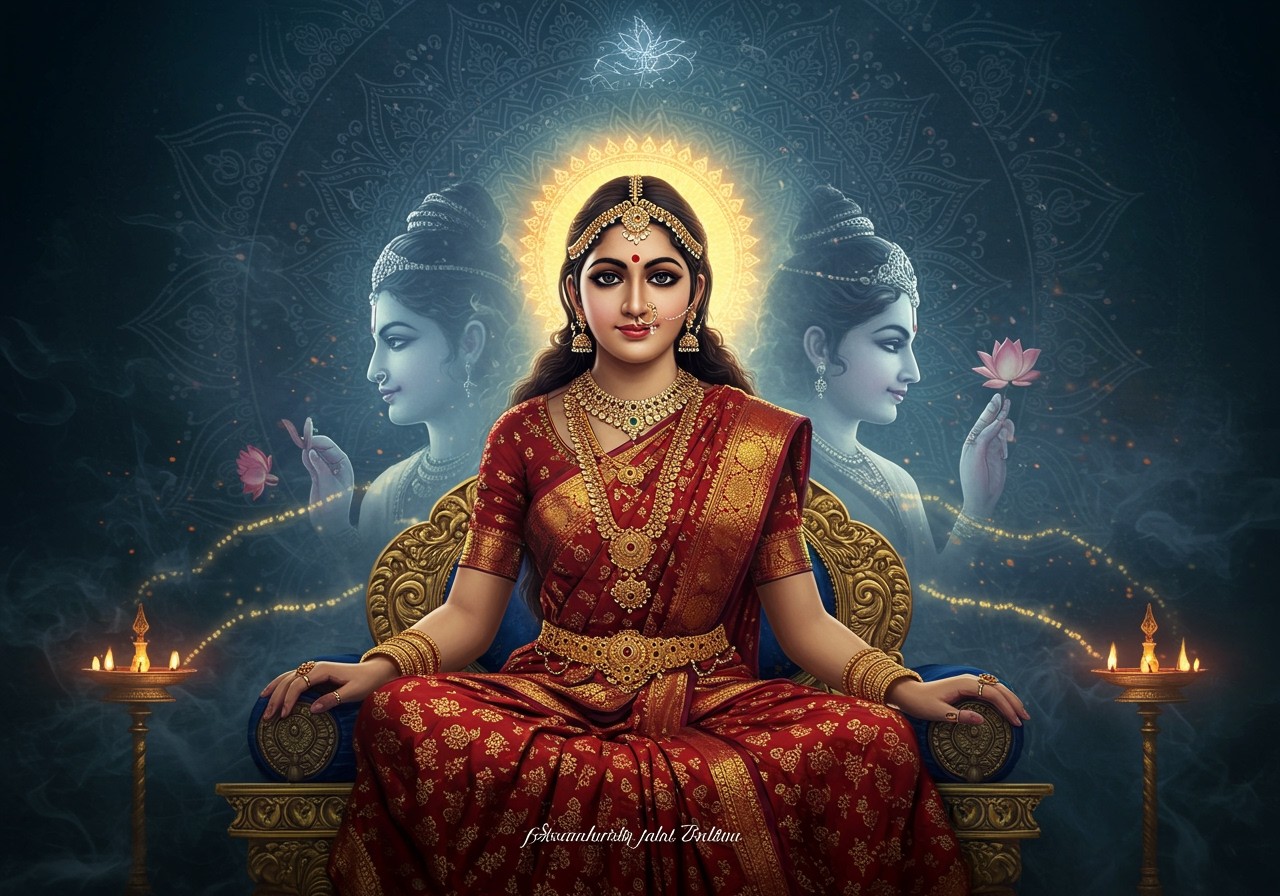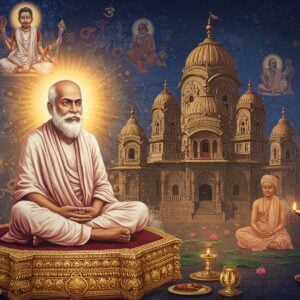
In the Ramayana, Sita is a pivotal character embodying enduring themes of duty, love, and devotion. Her relationships within this epic reflect values that resonate with those seeking balance between tradition and modern life. Examining Sita’s interactions provides insights into the relevance of these themes today, especially for a culturally connected audience. Understanding Sita’s key relationships deepens our appreciation of her role in the Ramayana.
Sita’s Lineage and Early Life
Sita, the daughter of King Janaka of Mithila, holds a unique position due to her divine birth from the earth, symbolizing purity and righteousness. Raised in a royal environment, she learned the significance of dharma, or duty, from her father. These foundational teachings shaped her decisions and relationships. Her lineage reflects societal norms for women in ancient India, highlighting values like devotion and integrity. This upbringing profoundly influenced Sita’s actions and choices throughout her life.
Sita’s Relationship with Rama
Sita’s connection with Rama is a narrative of profound love and unwavering devotion. This union, where dharma intertwines with affection, serves as an exemplary model for marital relationships in Hindu culture. Even amidst trials like her abduction by Ravana, Sita’s love for Rama remains steadfast. Their marriage symbolizes a harmonious balance between duty and romance.
In contemporary society, their relationship offers a perspective on gender roles and partnerships. Sita’s unwavering support for Rama, especially during exile, reflects her commitment to marital duty. Many view Sita as a powerful and liberated woman, making independent choices that assert her agency, such as accompanying Rama into exile.
Modern interpretations often highlight these qualities, portraying Sita not solely as the ideal wife but as a woman of strength and independence. Her resilience and ability to face adversity with grace resonate with the challenges faced by modern women. These narratives inspire contemporary women to balance personal aspirations with societal expectations while maintaining self-respect.
- Sita as a strong and liberated woman: Modern retellings emphasize Sita’s strength and independence, portraying her as a woman who makes her own choices, such as her decision to follow Rama into exile, an act of self-determination. These depictions showcase her inner strength and agency, inspiring women today.
- Sita as a symbol of female endurance and resilience: Sita’s ability to face challenges with dignity and strength is often emphasized. Modern interpretations recognize her capacity to use her wisdom and discernment to face challenges in a composed manner, providing a role model for women facing adversity today.
Sita’s Relation with Ravana
The interaction between Sita and Ravana is multifaceted and significant. While captive, Sita resists Ravana’s advances, demonstrating moral strength and unwavering resolve. She embodies patience and endurance, upholding righteousness despite adversity. This relationship underscores the battle between good and evil, with Sita representing purity and virtue against Ravana’s defiance of dharma.
For a modern audience, Sita’s resilience during captivity is a lesson in inner fortitude. Her ability to maintain her values despite external pressures is truly inspirational. It teaches the importance of remaining true to oneself, even when facing difficult trials.
- Multiple perspectives: Modern interpretations offer perspectives from other characters in the epic, such as Ravana and Mandodari, offering a more nuanced and multifaceted view of the events and motivations behind the characters’ actions. This broader perspective provides deeper context and understanding.
Sita and Her Sisters
Sita shares a deep bond with her sisters, Urmila, Mandavi, and Shrutakirti. These relationships highlight the importance of family connections that offer emotional support and solidarity. Her sisters play significant roles in the Ramayana’s narrative, emphasizing loyalty and duty within the family structure.
In Indian culture, sisterhood holds a special significance, reflecting profound connections that shape women’s identities and social roles. These bonds remind us of the enduring value of familial ties and their supportive role in navigating life’s complexities.
Sita’s Role and Legacy
Sita’s legacy as a symbol of feminine strength and virtue continues to inspire. Her actions throughout the Ramayana have shaped perceptions of ideal womanhood in Hindu culture. Modern interpretations often recognize her as a feminist figure who exercised agency in her life choices. Sita’s journey resonates with the experiences of many contemporary women.
Sita’s story encourages us to embrace strength and gentleness, establish boundaries in relationships, and prioritize self-respect. As her character continues to be explored in various forms of media, Sita remains relevant to modern audiences, bridging traditional values with contemporary perspectives on gender and identity.
- Relevance to modern women: Sita’s journey is a reflection of the struggles faced by modern women, such as balancing personal desires with societal expectations and maintaining self-respect amidst adversity. Her story provides lessons in balancing strength with compassion and setting healthy boundaries in relationships. Sita’s choices and experiences resonate deeply with modern-day challenges.
- Challenging traditional gender roles: Modern interpretations challenge traditional gender roles and expectations, highlighting the struggles women face in patriarchal societies. These interpretations offer new lenses for understanding the complexities of gender dynamics and empower women to question societal norms. They promote dialogue and reflection on the roles women play in contemporary society.
How Poojn.in Supports Your Connection to Sita’s Values
Poojn.in offers essential puja items that can help you honor Sita’s ideals of devotion and duty in your daily life. Our Ram Darbar idols serve as sacred reminders of the pure bond between Ram and Sita, ideal for your home temple. We provide authentic Ram-Sita photos in various sizes to enhance your prayer space.
For Sita-Ram puja, we offer complete puja sets with all the necessary items, including incense sticks, cotton wicks (batti), and special flowers. Explore our Ramayana-themed items like sacred threads (kalawa) and other religious accessories that connect you with Sita’s teachings. Visit poojn.in today to discover our carefully curated puja items, all packaged with care and delivered quickly across India, supporting your spiritual practices.
Conclusion: Sita’s Timeless Influence
Sita’s story transcends time, resonating deeply with us today. Her relationships with Rama, Ravana, and her sisters provide valuable insights into love, duty, resilience, and inner strength. As we navigate our own life journeys, Sita’s example guides us to stay true to our values, support our loved ones, and find strength amidst challenges.
Sita’s enduring legacy as a symbol of strength and virtue empowers us to balance personal aspirations with societal expectations. Her story motivates us to maintain our dignity, embrace our identities, and nurture supportive bonds. Sita’s narrative helps us bridge tradition and modernity, forging a path towards a harmonious future.
You can find more insightful articles on the Ramayana and its characters on our blog:
- Ramayana Characters and Life Lessons
- Dharma in the Ramayana: A Thematic Exploration
- Ramayana: Timeless Lessons for Modern Life
FAQs on Sita’s Relationships
Who is Sita’s father? Sita’s father is King Janaka of Mithila, known for his wisdom, nobility, and adherence to dharma. His influence instilled strong values in Sita.
What is Sita’s relationship with Ravana? Ravana, the demon king, abducted Sita. They are not related. Ravana desired Sita and wished to make her his queen, but Sita remained steadfast in her loyalty to Rama.
How did Sita’s relationship with her sisters influence her life? Sita’s close bond with her sisters, particularly Urmila, provided crucial emotional support and strength during challenging times, highlighting the importance of family ties. Their love and solidarity helped her maintain her resilience.
Why is Sita considered a symbol of devotion? Sita’s unwavering loyalty to Rama, enduring hardships and trials while upholding her duties as a wife, exemplifies her profound love and commitment, establishing her as a symbol of devotion. Her sacrifices underscore her dedication and fidelity.
What role does duty play in Sita’s relationships? Duty is paramount in Sita’s interactions. She prioritizes her responsibilities as a daughter, wife, and daughter-in-law, making personal sacrifices for her family and society. Her actions demonstrate her strong sense of obligation and adherence to dharma.
How does Sita’s relationship with Rama define her life? Sita’s relationship with Rama is central to her narrative. Their love story, characterized by mutual respect and devotion, also involves trials that test their bond, highlighting themes of duty and sacrifice. Their relationship shaped her experiences and choices significantly.
What lessons can we learn from Sita’s relationships today? Sita’s relationships offer timeless lessons in love, duty, devotion, and resilience. They remind us to uphold our values and commitments, even during adversity, making her story perpetually relevant. Her experiences provide guidance for navigating challenges and maintaining integrity.


